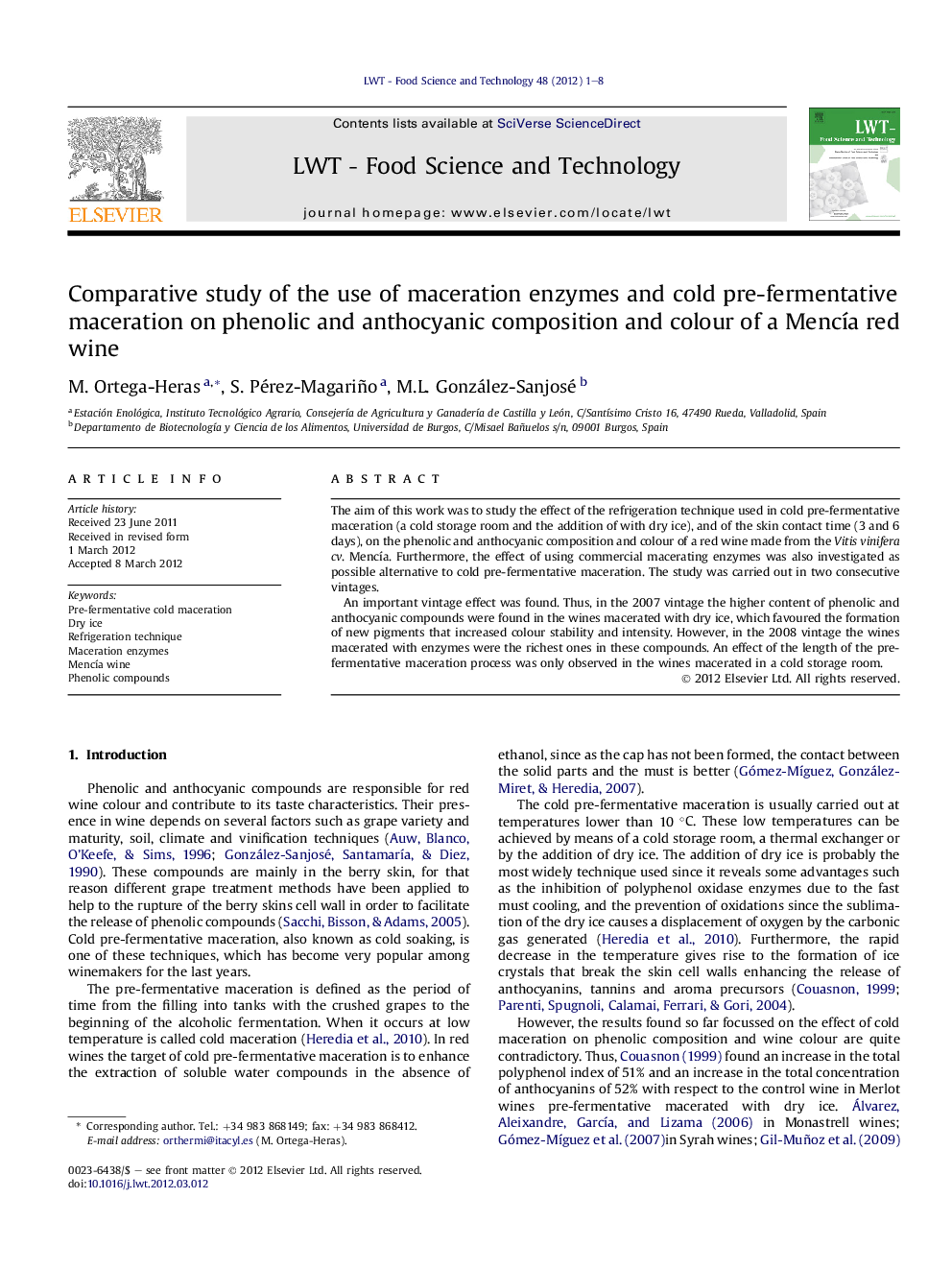| Article ID | Journal | Published Year | Pages | File Type |
|---|---|---|---|---|
| 6405157 | LWT - Food Science and Technology | 2012 | 8 Pages |
The aim of this work was to study the effect of the refrigeration technique used in cold pre-fermentative maceration (a cold storage room and the addition of with dry ice), and of the skin contact time (3 and 6 days), on the phenolic and anthocyanic composition and colour of a red wine made from the Vitis vinifera cv. MencÃa. Furthermore, the effect of using commercial macerating enzymes was also investigated as possible alternative to cold pre-fermentative maceration. The study was carried out in two consecutive vintages.An important vintage effect was found. Thus, in the 2007 vintage the higher content of phenolic and anthocyanic compounds were found in the wines macerated with dry ice, which favoured the formation of new pigments that increased colour stability and intensity. However, in the 2008 vintage the wines macerated with enzymes were the richest ones in these compounds. An effect of the length of the pre-fermentative maceration process was only observed in the wines macerated in a cold storage room.
⺠The effect of the refrigeration technique used in cold soak and the skin contact time has been studied. ⺠The effect of using commercial macerating enzymes was also investigated. ⺠Better results are obtained by the addition of dry ice than in a cold storage room. ⺠The use of macerating enzymes also allows to obtain good results. ⺠An effect of the skin contact time was only observed in the wines macerated in a cold storage room.
